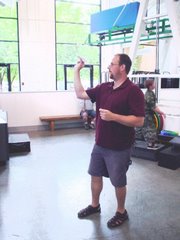I am interested in a very pragmatic perspective on learning. Like Schulz (2001), I am interested in how emergent organizations confront problems. This leads to a “pragmatic” perspective one learning in which I assume “…that org knowledge arises through learning from experiences with problems. In that view, knowledge consists of assumptions about problems and their solutions.” (Schulz 2001: 662). A further distinction that deserves attention is whether this pragmatic learning is exploration or exploitation. While this distinction ahs been discussed and studied (see refs), we still need a better idea of how properties of certain organizations facilitate or frustrate exploration or exploitation.
Routines have long been a focus of OL literature and research. Routines are the supra-individual unit of analysis for OL. Routines are the schema, procedures, rules, and norms that are the basis for taking action. In terms of exploration and exploitation, routines for problem-solving may be exploratory or exploitative. For example when facing a new challenge, a routine that calls for brainstorming in small groups is more exploratory than assigning a solution to one person who is instructed to look at past experience with similar problems. The link between routines and exploration-exploitation is multi-faceted and mediated through the structure of an organization’s social network, especially its subgroup articulation (non overlapping groups linked to each other by brokers). Routines matter for exploration and exploitation in two ways. First, an organization may have certain routines for problem-solving that promote exploration or exploitation. More subgroup articulation will facilitate exploratory routines because the knowledge produced by those routines will be more likely to develop and compete for adoption. Conversely, less subgroup articulation because of its greater efficiencies in knowledge transfer and retention, will tend to frustrate a specifically exploratory routine for problem solving. An organization may try to be more innovative or radical in its solutions (emerging from policy or organizational culture), but the effect of less sub group articulation will be to limit the creation and viability of that exploratory potential. Second, the amount of variation in problem solving routines will increase the amount of knowledge potential for the organization and hence exploration. This is a more indirect effect on exploration. However, it is also mediated by the relational property for subgroup articulation. More subgroups will tend to develop and nurture a greater variety of problem solving routines just as they foster and nurture a greater variety of ideas for solving problems.
The number of groups is very important to pursuing exploration because even specific individuals or routines that are focused on risk, innovation, creating new knowledge, or radical changes will see their efforts evaporate as the exploitative tendency of the denser network effectively (if unintentionally) limits the amount of requisite and viable possibilities. Hence, exploratory drive will suffocate under the weight of exploitation’s density and larger subgroups.
Two features of the interaction between networks and learning can influence exploratory or exploitative learning. One has to do with the creation of knowledge while the other has to do with the transfer of knowledge. To be more exploratory, an organization must have more ideas, more knowledge potential. More distinct subgroups will have more knowledge due to the insulating effect on knowledge and creativity of distinct subgroups. This first factor is requisite diversity of knowledge in the idea or knowledge stock available to guide company action. Higher requisite diversity leads to more exploration. The second has to do with knowledge transfer; specifically, whether the multiple relations of an organization’s social network are highly coupled or loosely coupled. Highly coupled relations will lead to more exploitation as knowledge has more conduits to spread and as actors will accord more legitimacy to knowledge that comes form a friend, work colleague, and trusted advisor than knowledge coming across only one of those relationships. Loosely coupled relations allow for the productive misfit of social networks.

No comments:
Post a Comment